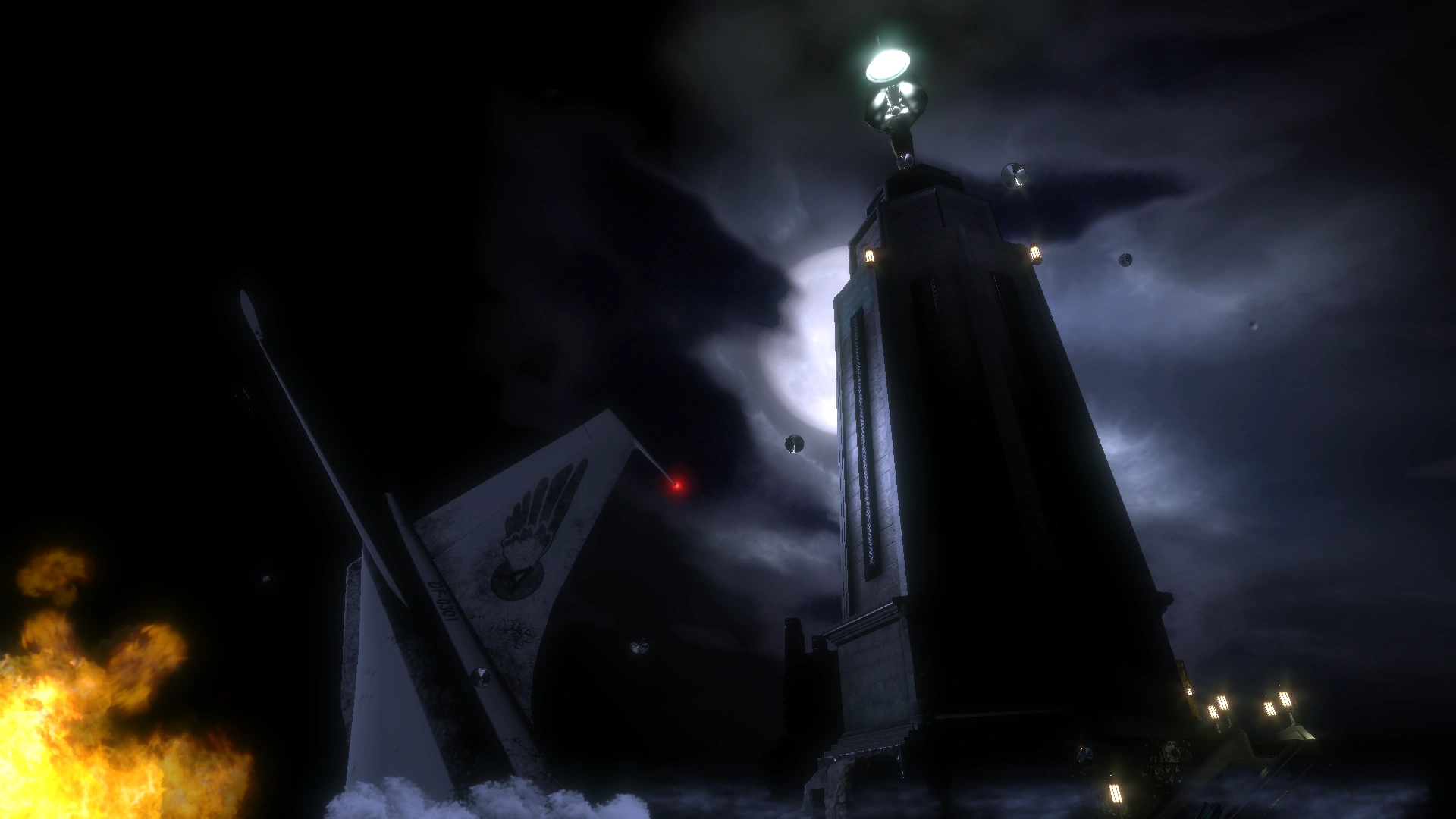
“Two things remain irretrievable: time and a first impression.” – Sophia Ozick
Probably the most notable feature of the intro sequence of BioShock is the enormous lighthouse jutting out of the middle of the Atlantic Ocean, underneath which lies the world of Rapture where the rest of the game takes place. This lighthouse is probably one of the most recognizable structures in all of gaming, and fans of the BioShock series were certainly pleasantly surprised by the inclusion of models of the lighthouse in BioShock 2, and finally a return to the lighthouse at the end of BioShock Infinite. So, what did BioShock do right? How did they make this space so recognizable, so evocative?
First impressions are important. In a social context, a first impression is a chance to, well, impress. It is a way to reveal your personality, your humor, and your intelligence. A first impression in a video game is equally important. The beginning sequence of BioShock lays the ultimate mood of the game: dark and surreal. The lighthouse you swim to is prominent. It stands out, literally above the rest of the game. Yet when you enter, instead of going up as you might expect to in a lighthouse, you go down. And down. And down. The lighthouse is the entrance, not only to the world of Rapture, but to the world of BioShock. The lighthouse is also salvation, not only for the playable character, but for the player as well. It is the escape from a plane crash, a way to preserve the life of the playable character, and so we, as players, are instinctively drawn to the lighthouse. In the BioShock sequels, we remember this tremendous first impression. It fills us with emotion. It creates a sense of familiarity: this is the BioShock we know and love.
Sequels often include callbacks to other installments of the game. In Borderlands 2, you return to the starting area of the original Borderlands. Any Assassin’s Creed fans will recognize the Animus as soon as it’s introduced in a new game. Of course, evocative spaces aren’t limited to sequels: remember Braid’s Donkey Kong easter egg?
Evocative spaces in video games are extremely useful in evoking emotional responses. They make us remember our first experiences. The make us nostalgic. They make me want to remember what it was like to play the game for the very first time again.

I really like the connection you made between evocative spaces and nostalgia. The very fact that the lighthouse in BioShock is filled with meanings immediate to the gameplay (as the entrance for the playable character) and metaphoric (emotionally provocative to the player, not the game character) is intriguing and I personally also think it physical prominence is equally leading. I can hardly recall a lot of examples in video games that are prone to install similarly evocative and colossal structures – most of the time, like in Braid, the game assumes an artificial and half-concrete space in the game as some sort of base camp (the house w rooms and puzzle pieces) as an abstract gateway. I wonder what difference it makes to erect this structure as abstract or more materialized.
You raise an interesting point. I would like to add that having a ‘space’ which follows you throughout the game and even contributes to the narrative further amplifies the nostalgia you mention. I think the best way to illustrate what I mean would be for me to provide an example. The Mass Effect trilogy is probably my favorite game series of all time (and conveniently shares a name with me!). Personally, the most memorable aspect of the game by far is your avatar’s ship, the Normandy. You would return to the ship after every mission to interact with various crew members and conduct upgrades. The ship also partakes in space combat in various cut scenes. The first iteration was destroyed at the end of ME1 (I think?) which actually sets up an awesome scene in ME2 where the second, rebuilt version of the Normandy is revealed. This was definitely a very nostalgic moment for me, to see such a memorable ‘space’ return to the game.
As a longtime Bioshock fan, I really enjoyed your connection between the the lighthouse, spatial recognition, and evocative spaces. While it is true that the lighthouse acts as a beacon of salvation, the trip down to Rapture can act to the main player as their damnation. Additionally, Bioshock Infinite and it’s DLC’s played off of the lighthouses symbolism in their respective stories. “There’s always a lighthouse, there’s always a man, there’s always a city”